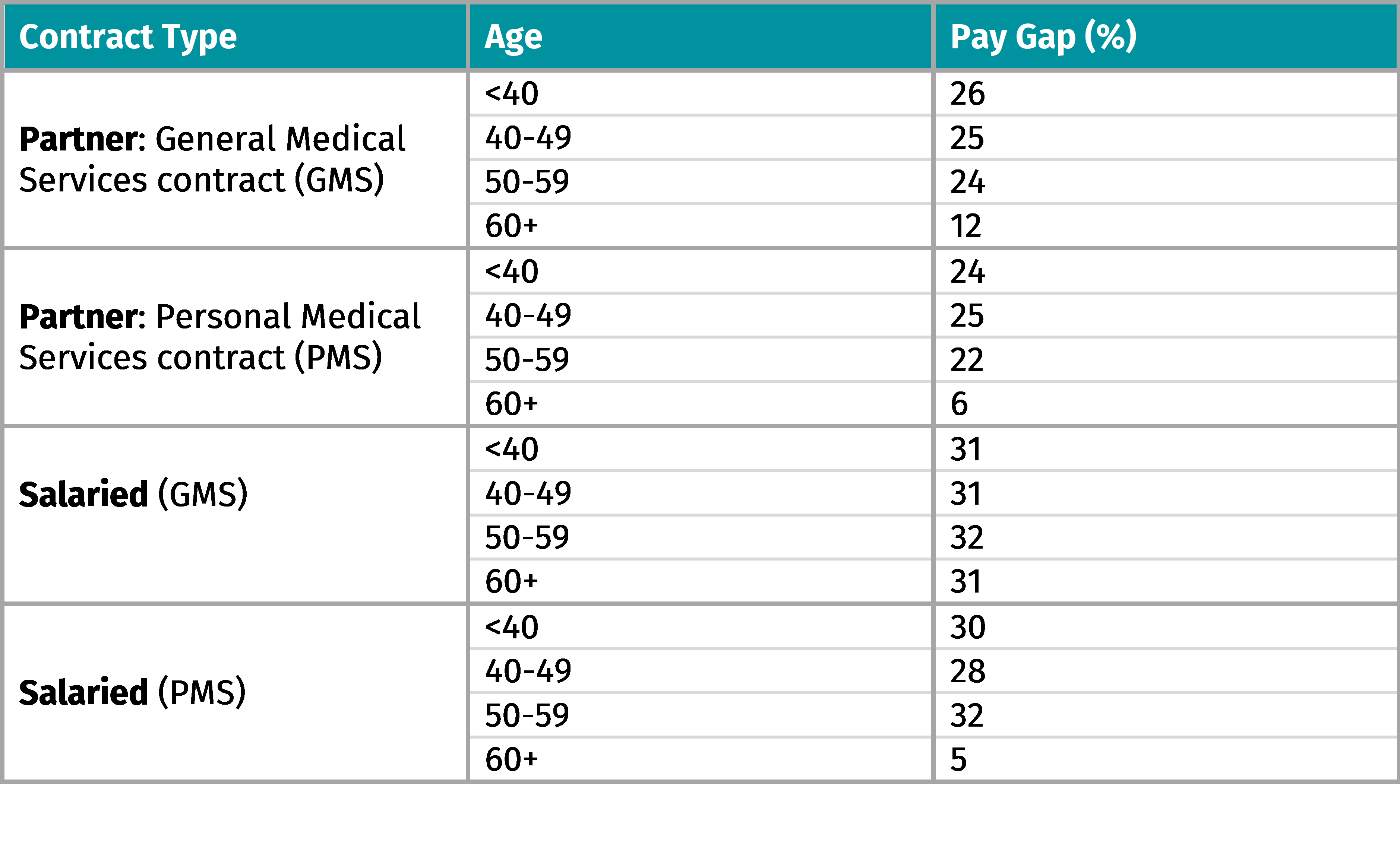Revealed: GP gender pay gap as high as 35 per cent
10 Jan 2020Press Story
IPPR analysis finds female GPs are earning on average £40,000 a year less than their male colleagues due to broken ‘two-tier system’
New IPPR analysis of official NHS workforce data has revealed the gender pay gap for General Practitioners now stands at 35 per cent – the fifth largest pay gap of any profession in the UK as a percentage. This gap is also significantly higher than the overall NHS average pay gap of 17 per cent and the mean UK pay gap of 16.2 per cent. This would make the mean GP gender pay gap the fifth largest in the country.
On average a male GP earns an estimated £110,000 a year whilst female GPs earn on average an estimated £70,000 – a difference of £40,000. A gap of this size means female GPs earn just 65p for every £1 earned by a male GP.
The analysis found that women of every age and on every type of General Practice contract earn less than their male counterparts – meaning a woman of any age, grade and seniority can expect to earn less than their male peers.
Causes
The IPPR research indicates key factors underpinning the pay gap. First, women are more likely to work part-time than men. On average, women work an estimated 0.69 ‘FTE’ (Full-time equivalent), compared to men working 0.89 FTE. Second, women General Practitioners tend to be younger: 35 per cent of women are younger than 40, compared to 22per cent of men.
However, these trends are true of medicine more widely and do not fully explain the size of the general practice model. A worrying third factor in this disparity is due to the model of general practice known as ‘the partnership model’ which IPPR says it fears is creating a two-tier system in general practice.
Almost 80 per cent of male GPs are partners, who part own, run and deliver NHS primary care services. By contrast fewer than 50 per cent of female GPs are partners. Partner GPs can expect to earn considerably more salaried GPs, who are twice as likely to be women.
A partner GP could expect to earn around £109,000 a year on average, whilst a salaried GP earns on average £58,000 a year. The unequal distribution of men and women in partner and salaried contracts is a clear driver of unequal pay, according to IPPR.
Next Steps
According to IPPR, these findings put a significant onus on the government to review how women can be better supported in work, and how the current two-tier contract system can be urgently rectified. IPPR will be publishing further recommendations on the future of primary care later in the year as part of the IPPR Better Health and Care Programme.
Commenting on the findings, Chris Thomas, IPPR Health Research Fellow and lead author said:
“The GP pay gap is a shocking inditement of the inequality in medicine, and society more widely. As it stands, the general practice pay gap is the equivalent of a woman GP working for free between the August bank holiday weekend and Christmas. The onus is on government to use their majority to make sure general practice works, fairly, for all our hard-working medical professionals.
Clare Gerada, senior GP, former chairperson of the Royal College of GPs (RCGP) and member of the IPPR Better Health and Care Advisory Panel, said
“Equality is built into the DNA of the NHS: it’s free at the point of need for everyone when we need it most. It is therefore all the more concerning - though not a surprise to me - that gender inequality is this prevalent in general practice. We must do something about it. We need the talents of all GPs regardless of gender, race or background to be embraced if we are going to address the GP workforce crisis and deliver high quality care for all”
ENDS
NOTES TO EDITORS
The IPPR analysis, Mind the GP, by Chris Thomas and Harry Quilter-Pinner is available for download at: http://www.ippr.org/blog/mind-the-gp
Table: GP gender pay gap by age and contract type

The pay gap is calculated as a mean using the most recent GP earnings and expenses data. This is weighted by PMS/GMS and by the age distribution of general practitioners, using the most recent workforce in general practice data release. Pay gap statistics in this press release are all quoted as a mean. Using the mean, as opposed to the median, increases the impact that extremely high or low pay will have on the final figure – in the case of GPs, this is likely to be small. In the most recent ONS statistics on the gender pay gap, the mean pay gap was 0.9 points lower than the median pay gap.
In 2018, IPPR released the report ‘The State of Pay: Demystifying the Gender Pay Gap’. This showed a large gender pay gap in the UK. It made key recommendations to close the gap, including a rethink by employers on policies around pay negotiation; a more structured approach to progression; encouraging men to work more flexibly and for employers to publish narrative reports alongside their pay gap reporting. It is available to read here: https://www.ippr.org/publications/the-state-of-pay
IPPR is the UK’s pre-eminent progressive think tank. With more than 40 staff in offices in London, Manchester, Newcastle and Edinburgh, IPPR is Britain’s only national think tank with a truly national presence www.ippr.org